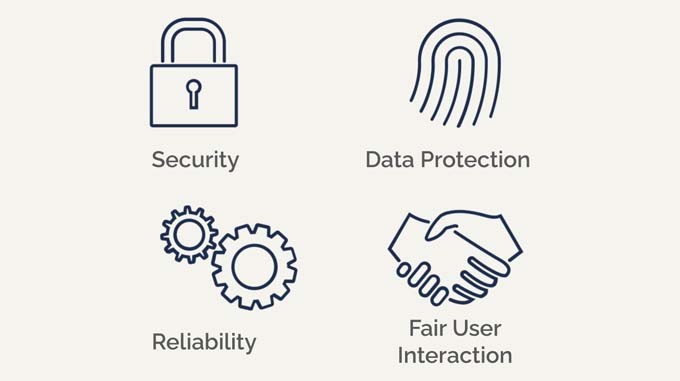Values, risks and systemic coaching
We live in an increasingly complex world with global problems, exponentially growing knowledge that is diluted with virtual and artificial algorithm-based "fake knowledge", and where ChatGPT was yesterday and AutoGPT (AI) is today ...

We are currently living in a time in which the "outside" (number of clicks, titles, etc.) counts more than the "inside" (experience, knowledge, skills, integrity) of people, in which people are questioning "how science creates knowledge" and the short-term is preferred to the long-term. This raises the question: How can an individual or even an entire company align itself in a meaningful way?
Being creative on site
Did Sir Patrick Geddes' "Think global - act local" or Immanuel Kant's categorical imperative "Live as if your actions could be law", i.e. to consider the effects of your actions on all people in your actions, provide indicative, feasible guidance? Can proactive risk management help us as people and as a company to align ourselves?
Are there even social components that help to create added value in a world of bits and bytes, of profits and losses, i.e. of bare numbers? What does all this have to do with values? We remember that Homo sapiens has prevailed because it has a collective self! Our success is based on compassionate cooperation (despite all the competition), at least according to John Izzo.
Values as a compass
How can a value be important or even central to our actions? Values, according to Hans Joas "strongly emotional ideas about what is truly worth desiring", provide a goal or several goals and make it possible to align oneself with them. Similar to lines of longitude or latitude, they can point the way and thus provide support and orientation in everyday life. In particular, they help to increase the effectiveness of change processes and ensure sustainability. Values can be, for example: Drive, humility, experience, resourcefulness, helpfulness, camaraderie, curiosity, privacy, calmness, astuteness, trust. This is just a small selection from a large pool of values.
According to Viktor Frankl, we distinguish between three categories of values. Accordingly, there are attitudinal values (attitudes), creative values (transitory) and experiential values (conscious perception, mindfulness). Currently, there is an overemphasis in society on creative values at the expense of experiential and attitudinal values. Values give us ranges for our behavior and are also the basis for expectations and expectations of expectations. In short, they serve us consciously and unconsciously as a compass in life (at work, in relationships). If we lack these values or experience a violation of them, this has consequences that can even lead to illness. In the opposite case, i.e. if we have anchored these values in our lives, they help us to recognize a deeper meaning.
The environment and nature
Once we have our values as a compass for our actions, the question arises as to the path or playing field, i.e. our environment. From the perspective of both the company and the individual, we cannot ignore this - especially its increasing complexity. The playing field, the path of life, can depend on the conditions of the economic market (socialism, capitalism), the political regulations (systems, parties, dictatorships), the natural conditions (earth, tropics, temperatures), our culture and history, the family and the degrees of freedom (experienced) contained therein.
Urie Bronfenbrenner's ecological systems theory of development views the human being as "a developing being in a complex system of relationships, whereby these relationships are influenced at various levels by the developmental environment". The environment is perceived here as a series of nested structures (family, neighborhood, workplace). This is where people spend their everyday lives. The mesosystem in particular is concerned with the interactions of various microsystems. This is encompassed by the exosystem, i.e. the social environmental conditions. This in turn is underpinned by laws, values and culture in the macrosystem.
Let's take a look at the blueprint of life and all processes: nature. How does a tree do this, for example? Anchored to its environment by roots, a stable trunk that regularly documents in its annual rings (see pictures) whether it was a good or bad year (evidence, comparable to the storage of experiences in the human body), branches that flexibly defy wind and weather, that supply the leaves and flowers with nutrients obtained from the earth and absorbed via the roots, so that fruits and seeds can ripen. The tree adapts its internal processes (flowers blossom, leaves turn brown) to the outside, i.e. the seasons.
This all takes place in a dynamic system, i.e. constant change ensures that the environment is not static, and it means that every change of role causes changes in the microsystem. These are referred to as ecological transitions and often represent turning points. These can be induced from outside or arise from within. Every change harbors risks and opportunities.
Risk management in the context of the company
If we consider the word risk to be derived from the Latin "risicare" (= "to sail around a cliff", editor's note), then it has a positive character, as it stands for "to dare to do something" or "to undertake something". By taking a systematic approach, risk management makes it possible to recognize, assess and control the risks resulting from hazards and, if they cannot be overcome, to accept them.
In addition to the external risk areas of a company (e.g. politics, ecology, economy, technology), there are also internal sources of risk (products, finance, personnel, management). If we look at the inside of a company, the risks are industry-specific and diverse, i.e. issues and incidents that can be associated with the risks can range from occupational safety and data integrity to marketing campaigns.
In the ideal case of an incident, you try to find the source, i.e. the root of the event. You go to the source to fix the problem where it originated.
Value-oriented systemic coaching
Value developments and value violations come together to form a person's value system. Our experience of them shapes our assessment and judgment of the world. On this basis, our brain creates an individual order of values (value hierarchy). This is where the St. Gallen Coaching Model® (SCM) by Rudolf E. Fitz comes in, which assumes that we are mostly unconsciously guided by these values. The SCM follows the five dimensions of spirituality, time structures, depth structures, problem and development space and the value in the context of the target space.
As a value-oriented systemic coach, we assume that the client unconsciously carries the best solution within them. Helping them to become aware is achieved through systemic questions and a regular change of perspective (into the unconscious) and the methodically based process.
The coachee is viewed in the context of their family of origin, circle of acquaintances, professional systems, etc. The dissolution of behavioral patterns plays a major role. The coachee's recognition of what causes an omission contributes to sustainable solutions.
Merging nature - people - company
If we look at the similarities between nature, humans and a company in terms of adaptability to ensure survival in the environment, we can see that both external factors and internal processes influence stability.
Systematically identifying values, risks, systems, experiences and beliefs unconsciously creates a self-image and group behavior simply by perceiving them. Imagine that you are the only one in a group who walks to the right rhythm. The group lives the lived and not the written code. The limits of perception are where the unconsciously stored information controls the mind and guides the person.
The unconscious alignment of a person's values with the (lived) values of the company determines the performance contribution of the individual. Like a magnet, shared values help people to align themselves in the same way and allow energy to flow in the same direction (as shared values are present).
Awareness of values
The company needs values to create clarity in its actions and a common direction. People want to increase their values or prevent them from being violated, i.e. both must be considered in risk management and in value-oriented systemic coaching.
What does the company learn from this? It should not only focus on the opportunities for more turnover, but also on managing the risks to create resilience. Through systemic coaching, individuals have the opportunity to become aware of their values, to recognize and cultivate them and to align their life compass.
An internally tidy person is an asset to any company, especially if they stand for the same values as the company.
Author
Lars Groh is a board member of the Risk Management Network.
This article is part of a series of articles contributed by experts from the Risk Management Network.
www.netzwerk- risikomanagement.ch









